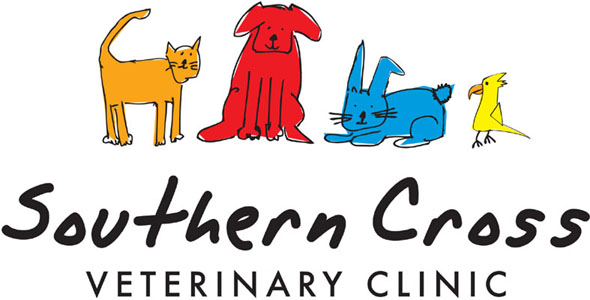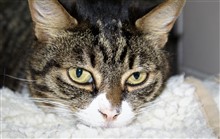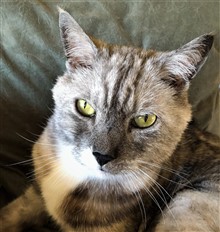

HOW WILL I KNOW WHEN IT’S TIME?
Well, being able to recognise and evaluate your pet’s quality of life will help, but it’s just part of the process. Remember, you are not alone! As vets, it's our job to assist you and your family in your decision-making. You may feel like you’re letting you pet down, or worse, feel responsible for your friend’s death, but don’t forget that, when used appropriately and timely, euthanasia is a gift that prevents further physical suffering for your pet and emotional suffering of you and your family. As you contemplate what to do it's important to remember that there’s not one perfect moment. Rather, there’s a subjective period in which euthanasia may be appropriate. This period could be just hours or days, or it may be weeks or even months. Prior to this subjective period, we, as vets may refuse to euthanise a pet as a good quality of life still exists. However, after this period, we may push for euthanasia because of obvious sustained suffering. Yet, throughout the subjective period it is about your decision and what is best for your family. Your decisions will be your own, and will differ from those made by other families. That’s ok. Each family is different. Some owners take time to come to terms with their pet’s decline, whilst others want to prevent any unnecessary suffering at all. Remember, we’re all different and there’s no one size fits all answer to the question, ‘How will I know it’s time?’
When faced with this difficult decision there are a number of common factors we’ll likely discuss with you, factors which impact upon your pet’s quality of life and which play a role in choosing to euthanise our pets.
PAIN & ANXIETY:
Two important factors we’ll discuss are pain and anxiety. No doubt you’ll have heard that pets ‘hide’ their pain. Well, this varies from species to species, with carnivores like cats and dogs behaving differently to prey animals such as rabbits or guinea pigs. Clearly, in either case, your pet will behave differently to us humans, as they don’t know their diagnosis or have the emotional attachments with it that we do. Regardless of the differences between humans and other animals, we don’t want our pets to suffer unnecessary pain. So, being alert to common signs of pain, such as pacing, excessive panting, hiding in unique areas, not seeking interaction with family, growling, snarling, snapping, immobility, whining, not eating, flinching when touched, in cats and dogs can help us to evaluate our pet’s quality of life and whether interventions to manage and control pain are being successful. Read more about pain and how we can help to manage it.
Besides pain itself, another common factor to consider is anxiety. Indeed, anxiety may be worse than pain for animals. All we need to do is think back to when our pet was last at the vet clinic. How did he behave? Was he nervous? Did you see the look, “this is awful”? Now, compare that to when your pet hurt itself, maybe scraping a paw or straining a muscle. Well, that difference between pain and anxiety is also evident in animals that are dying. The symptoms they show, like a dog with arthritis whining, pacing, or panting, may be less to do with pain than with anxiety. These signs of anxiety can appear worse at night. Whilst anti-anxiety medications can be helpful, the end is usually near for pets with this level of anxiety.
So, observe your pet for signs of pain and anxiety, and ask us for help in monitoring changes. For instance, we can provide you with a pain scoring tool for your dog.
EATING & DRINKING:
Often, as pet owners, we are alert to changes in our pet’s eating and drinking. Indeed, frequently, this can be a first sign that something is wrong. Whilst pets can survive for days without food and water, lack of appetite or thirst can signal that the body is shutting down. No doubt that’s why we vets often ask, ‘How’s he eating? How’s he drinking?’ when we’re examining your pet.
When we’ve recognised that there’s a problem with eating and drinking, we may find appetite stimulants beneficial for a time. Additionally, remember that the focus now will be on maintaining energy, rather than on a nutritionally balanced diet. There are things you can try as a pet owner, such as new foods, or feeding in different places in your home and at different times. If your pet is uninterested in water you might try a low-sodium chicken broth or use a syringe to gently wet the tongue so as to stimulate a few licks. Again, thickening water with a little glycerin can have the same effect, and wetting the mouth is beneficial even in the later stages of the dying process. However, avoid forcing food or water down your pet. This may cause unnecessary anxiety.
INCONTINENCE:
Inability to maintain hygiene and growing incontinence can be common towards the end of life, or with certain disease processes. Many of us feel guilty about getting annoyed about our pet becoming incontinent. This is normal. Our pets don’t want to do it, they just can’t help themselves anymore. This may lead them to become anxious, showing signs of panting and discomfort. We need to take care of them, easing their anxiety and preventing further problems like bed sores and systemic infections. We can do this by shaving affected areas, cleaning them, ensuring wet bedding is changed out for clean and dry bedding, and using absorbent pads, among other things.
MOBILITY:
Being able to get up and move around is part and parcel of life, and when our pets get old, just like us, this becomes more of a challenge. The signs of loss of mobility may become more evident at night, and we may see a progression from not being able to get up, to not being able to stand, falling down, being unable to urinate or defecate, and panting heavily. As this happens, it is likely your pet will become more anxious. There are lots of things we can do these days, besides medications, there’s acupuncture and physical rehabilitation/physiotherapy, and much more besides, such as environmental modification. Yet, at some point these interventions will make less of a difference or cease to make a difference and at that point quality of life will be a concern. As in the case of incontinence, we need to help our pets so as to prevent bed sores and infections.
HAPPINESS:
“Is he happy in himself?” Being a keen observer of your pet’s behaviour and attitude, you’ll be in the best position to answer this question. You’ll notice that they’re no longer interested in their favourite toys or activities, or maybe they don’t seek out you and your family. Maybe you just can’t get a purr or a tail wag. Such small signs can often tell you that quality of life is lacking for your pet.
So, when we meet to discuss whether or not it’s time to euthanise your pet, being able to evaluate your pet’s quality of life and thinking about these factors will be of help in making this most difficult decision. Remember, we are here to help, but the decision is ultimately your own, and will reflect what your family thinks is best. You know your pet best and will be able to see specific changes that indicate the time is right such as:
No longer interested in food or water;
Incontinence (accidents in the house) or unable to go to the bathroom without falling down;
No longer greeting you when you come home;
No longer patrolling the yard or protecting their territory the way they used to;
Lack of grooming (cats and some dogs);
No longer wags his tail or holds it down constantly;
Isolate themselves from the people or other pets in the home, particularly in places they usually do not go;
Decreased interest in playing;
Unable to stand or walk on their own;
Change in attitude (depression, aggression, confusion);
Not wanting to do the things they love;
Fewer "good" days than bad.
WAITING TOO LONG
Experience is our teacher. There is always a first time for us to say goodbye. Often, when we are faced with losing a pet for the first time we tend to hold on, waiting until the very end to decide to euthanise. We’re often worried about doing it too soon or giving up when there still seems to be hope. Yet, afterwards, when we reflect, most of us regret waiting too long. We may feel guilty about putting our pets through unnecessary trips and procedures that made no difference to our pet’s quality of life. Having been through it once, many of us don’t wait as long the next time, choosing instead to make the decision at the beginning of the decline instead of at the end.
WHAT ABOUT A NATURAL DEATH?
Some of us may have a romantic notion of our pets falling asleep and slipping from this world. Yet, such a peaceful death, though possible, is rare. If it should happen, then we should take it as a gift given to us by our pet, releasing us from making the ultimate decision of their behalf. On the other hand, when a natural death is chosen over euthanasia it is often because of religious or emotional objections to euthanasia. It is important to understand what the process entails, whether a ‘natural death’ or that by euthanasia to weigh your options carefully.
A NATURAL DEATH
Our pets live in a world largely devoid of what they would experience if Mother Nature were to simply take its course without our intervention. This means that they are unlikely to succumb to a death due to predation, and that a natural death, is what we might term, an “unassisted biological death.” In other words, the disease process is left to take its course, and this process will therefore vary from animal to animal and disease to disease. So, if you’re thinking about choosing a ‘natural death’ rather than euthanasia, be sure to ask our vet to walk you through the disease process applicable for your pet. Watching this process through to the end can be an extremely difficult thing to witness.
WEIGH YOUR OPTIONS CAREFULLY
We aren’t in control, but sometimes we’re given the opportunity to take control and to shape situations. This can be the case with euthanasia. When we know a diagnosis and we know the disease progression, we have an opportunity to plan for a peaceful, calm and family-oriented, end of life experience for our pets. This will entail making the decision sooner, rather than waiting until the last moment, which will more likely be filled with stress, anxiety, and may even be an emergency situation. Coming to the decision to euthanise should be about preventing suffering, rather than ceasing any suffering that has already occurred. We, as your vets, are here to help make this as easy as it can be for you and your pet, and will do everything we can to maintain the comfort, quality of life, and the human animal bond for as long as needed.
Contact Us - we are here for you and your pet
back to Pet Info
back to Home
Well, being able to recognise and evaluate your pet’s quality of life will help, but it’s just part of the process. Remember, you are not alone! As vets, it's our job to assist you and your family in your decision-making. You may feel like you’re letting you pet down, or worse, feel responsible for your friend’s death, but don’t forget that, when used appropriately and timely, euthanasia is a gift that prevents further physical suffering for your pet and emotional suffering of you and your family. As you contemplate what to do it's important to remember that there’s not one perfect moment. Rather, there’s a subjective period in which euthanasia may be appropriate. This period could be just hours or days, or it may be weeks or even months. Prior to this subjective period, we, as vets may refuse to euthanise a pet as a good quality of life still exists. However, after this period, we may push for euthanasia because of obvious sustained suffering. Yet, throughout the subjective period it is about your decision and what is best for your family. Your decisions will be your own, and will differ from those made by other families. That’s ok. Each family is different. Some owners take time to come to terms with their pet’s decline, whilst others want to prevent any unnecessary suffering at all. Remember, we’re all different and there’s no one size fits all answer to the question, ‘How will I know it’s time?’
When faced with this difficult decision there are a number of common factors we’ll likely discuss with you, factors which impact upon your pet’s quality of life and which play a role in choosing to euthanise our pets.
PAIN & ANXIETY:
Two important factors we’ll discuss are pain and anxiety. No doubt you’ll have heard that pets ‘hide’ their pain. Well, this varies from species to species, with carnivores like cats and dogs behaving differently to prey animals such as rabbits or guinea pigs. Clearly, in either case, your pet will behave differently to us humans, as they don’t know their diagnosis or have the emotional attachments with it that we do. Regardless of the differences between humans and other animals, we don’t want our pets to suffer unnecessary pain. So, being alert to common signs of pain, such as pacing, excessive panting, hiding in unique areas, not seeking interaction with family, growling, snarling, snapping, immobility, whining, not eating, flinching when touched, in cats and dogs can help us to evaluate our pet’s quality of life and whether interventions to manage and control pain are being successful. Read more about pain and how we can help to manage it.
Besides pain itself, another common factor to consider is anxiety. Indeed, anxiety may be worse than pain for animals. All we need to do is think back to when our pet was last at the vet clinic. How did he behave? Was he nervous? Did you see the look, “this is awful”? Now, compare that to when your pet hurt itself, maybe scraping a paw or straining a muscle. Well, that difference between pain and anxiety is also evident in animals that are dying. The symptoms they show, like a dog with arthritis whining, pacing, or panting, may be less to do with pain than with anxiety. These signs of anxiety can appear worse at night. Whilst anti-anxiety medications can be helpful, the end is usually near for pets with this level of anxiety.
So, observe your pet for signs of pain and anxiety, and ask us for help in monitoring changes. For instance, we can provide you with a pain scoring tool for your dog.
EATING & DRINKING:
Often, as pet owners, we are alert to changes in our pet’s eating and drinking. Indeed, frequently, this can be a first sign that something is wrong. Whilst pets can survive for days without food and water, lack of appetite or thirst can signal that the body is shutting down. No doubt that’s why we vets often ask, ‘How’s he eating? How’s he drinking?’ when we’re examining your pet.
When we’ve recognised that there’s a problem with eating and drinking, we may find appetite stimulants beneficial for a time. Additionally, remember that the focus now will be on maintaining energy, rather than on a nutritionally balanced diet. There are things you can try as a pet owner, such as new foods, or feeding in different places in your home and at different times. If your pet is uninterested in water you might try a low-sodium chicken broth or use a syringe to gently wet the tongue so as to stimulate a few licks. Again, thickening water with a little glycerin can have the same effect, and wetting the mouth is beneficial even in the later stages of the dying process. However, avoid forcing food or water down your pet. This may cause unnecessary anxiety.
INCONTINENCE:
Inability to maintain hygiene and growing incontinence can be common towards the end of life, or with certain disease processes. Many of us feel guilty about getting annoyed about our pet becoming incontinent. This is normal. Our pets don’t want to do it, they just can’t help themselves anymore. This may lead them to become anxious, showing signs of panting and discomfort. We need to take care of them, easing their anxiety and preventing further problems like bed sores and systemic infections. We can do this by shaving affected areas, cleaning them, ensuring wet bedding is changed out for clean and dry bedding, and using absorbent pads, among other things.
MOBILITY:
Being able to get up and move around is part and parcel of life, and when our pets get old, just like us, this becomes more of a challenge. The signs of loss of mobility may become more evident at night, and we may see a progression from not being able to get up, to not being able to stand, falling down, being unable to urinate or defecate, and panting heavily. As this happens, it is likely your pet will become more anxious. There are lots of things we can do these days, besides medications, there’s acupuncture and physical rehabilitation/physiotherapy, and much more besides, such as environmental modification. Yet, at some point these interventions will make less of a difference or cease to make a difference and at that point quality of life will be a concern. As in the case of incontinence, we need to help our pets so as to prevent bed sores and infections.
HAPPINESS:
“Is he happy in himself?” Being a keen observer of your pet’s behaviour and attitude, you’ll be in the best position to answer this question. You’ll notice that they’re no longer interested in their favourite toys or activities, or maybe they don’t seek out you and your family. Maybe you just can’t get a purr or a tail wag. Such small signs can often tell you that quality of life is lacking for your pet.
So, when we meet to discuss whether or not it’s time to euthanise your pet, being able to evaluate your pet’s quality of life and thinking about these factors will be of help in making this most difficult decision. Remember, we are here to help, but the decision is ultimately your own, and will reflect what your family thinks is best. You know your pet best and will be able to see specific changes that indicate the time is right such as:
No longer interested in food or water;
Incontinence (accidents in the house) or unable to go to the bathroom without falling down;
No longer greeting you when you come home;
No longer patrolling the yard or protecting their territory the way they used to;
Lack of grooming (cats and some dogs);
No longer wags his tail or holds it down constantly;
Isolate themselves from the people or other pets in the home, particularly in places they usually do not go;
Decreased interest in playing;
Unable to stand or walk on their own;
Change in attitude (depression, aggression, confusion);
Not wanting to do the things they love;
Fewer "good" days than bad.
WAITING TOO LONG
Experience is our teacher. There is always a first time for us to say goodbye. Often, when we are faced with losing a pet for the first time we tend to hold on, waiting until the very end to decide to euthanise. We’re often worried about doing it too soon or giving up when there still seems to be hope. Yet, afterwards, when we reflect, most of us regret waiting too long. We may feel guilty about putting our pets through unnecessary trips and procedures that made no difference to our pet’s quality of life. Having been through it once, many of us don’t wait as long the next time, choosing instead to make the decision at the beginning of the decline instead of at the end.
WHAT ABOUT A NATURAL DEATH?
Some of us may have a romantic notion of our pets falling asleep and slipping from this world. Yet, such a peaceful death, though possible, is rare. If it should happen, then we should take it as a gift given to us by our pet, releasing us from making the ultimate decision of their behalf. On the other hand, when a natural death is chosen over euthanasia it is often because of religious or emotional objections to euthanasia. It is important to understand what the process entails, whether a ‘natural death’ or that by euthanasia to weigh your options carefully.
A NATURAL DEATH
Our pets live in a world largely devoid of what they would experience if Mother Nature were to simply take its course without our intervention. This means that they are unlikely to succumb to a death due to predation, and that a natural death, is what we might term, an “unassisted biological death.” In other words, the disease process is left to take its course, and this process will therefore vary from animal to animal and disease to disease. So, if you’re thinking about choosing a ‘natural death’ rather than euthanasia, be sure to ask our vet to walk you through the disease process applicable for your pet. Watching this process through to the end can be an extremely difficult thing to witness.
WEIGH YOUR OPTIONS CAREFULLY
We aren’t in control, but sometimes we’re given the opportunity to take control and to shape situations. This can be the case with euthanasia. When we know a diagnosis and we know the disease progression, we have an opportunity to plan for a peaceful, calm and family-oriented, end of life experience for our pets. This will entail making the decision sooner, rather than waiting until the last moment, which will more likely be filled with stress, anxiety, and may even be an emergency situation. Coming to the decision to euthanise should be about preventing suffering, rather than ceasing any suffering that has already occurred. We, as your vets, are here to help make this as easy as it can be for you and your pet, and will do everything we can to maintain the comfort, quality of life, and the human animal bond for as long as needed.
Contact Us - we are here for you and your pet
back to Pet Info
back to Home



